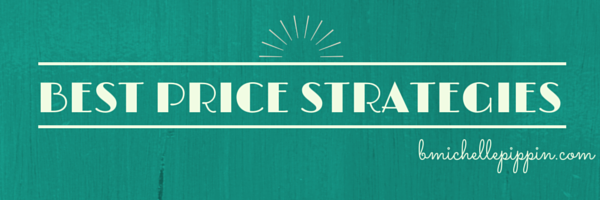 Business owners wonder “how to price” their products, and — worse — agonize over how to price their services. How much is too much to charge? Are my prices too high? Too low? How much SHOULD I charge? And these questions are important, because pricing is critical in your business.
Business owners wonder “how to price” their products, and — worse — agonize over how to price their services. How much is too much to charge? Are my prices too high? Too low? How much SHOULD I charge? And these questions are important, because pricing is critical in your business.
Make no mistake, your prices speak on your behalf.
Are you the cheap version? (The Yugo?) The luxury / boutique option? (The Mercedes?) Or somewhere in between? Your pricing speaks of your value, your experience, your accessibility and calls out to and/or repels different markets. If you’re the cheap option, luxury, C-suite clients are going to assume you are “not for them.” If you’re the most expensive option, those just starting out or younger demographics will assume you’re “not for them.” Pricing indicates “positioning” within your industry.
So, what IS the RIGHT way to price?
I’m going to spare you the tired formula of cost plus time plus profit B.S. You’ve heard it countless times before and — frankly — anything widely accepted by MOST business owners should be VERY suspect. (Since MOST business owners ultimately close their doors in shame, defeat, debt and sometimes even worse.)
First, what do you WANT to get paid? You might as well start there because your market is a whole lot less PRICE SENSITIVE than you think. Need some evidence here, but sick of people pointing to Starbucks as an example of us waiting in lines to pay 4X what anyone else dares to charge for a cup of coffee? After all, no offense, but YOU — dear friend — are no Starbucks. And neither am I. Plus, we all know we go to Starbucks for the buzz, the environment, the baristas.
You’re right though, that price analogy is — while still relevant — over-used and boring. So, I have another one for you. What about KEURIG? lol… I mean, buying those little K-cups cost us about 50 cents a cup of coffee.. MADE BY US, in our own kitchens, served in cups we have to wash ourselves. No barista. No tiny tables. No friends to meet. What are we paying per pound for that coffee? I haven’t done the math, but I’d venture to say that we pay MORE per pound of coffee via K-cups than we pay for cable. Seriously.
But MOST of us still use these K-cups. Why? Because PRICE is elastic… and we are willing to pay for matters of convenience. Want additional examples of price elasticity? I’m chock full of them. Mercedes vs Yugo. Neiman Marcus vs. Walmart. Salon color vs. box. Bottom-line: Your market and mine ARE willing to pay premium prices for something.
But it is up to you to tell them WHY they should pay premium prices to work with you.
Blaming a lack of sales on pricing is lazy and uncreative. Don’t do it yourself. And don’t buy this excuse from your sales people. Maybe YOUR market actually DOES buy on price and price alone. If so, who chose that market? You did. This means you can (and should) choose another market. BUT, only about 8 – 20% of the market actually buys on price ALONE. Most of the time, when people are buying — based largely or exclusively — on price, it’s because the salesperson or business owner hasn’t given a lot of thought to positioning, comparison, and or the sales conversation.
It’s important to give a lot of thought to that sales conversation. What will lead UP to the conversation? When will you bring up price? How will you present price? How will you address objections? Uncomfortable Truth: Lazy sales people / business owners see MASSIVE price resistance. Savvy sales people see a WHOLE LOT LESS. Want more help? Download this below: